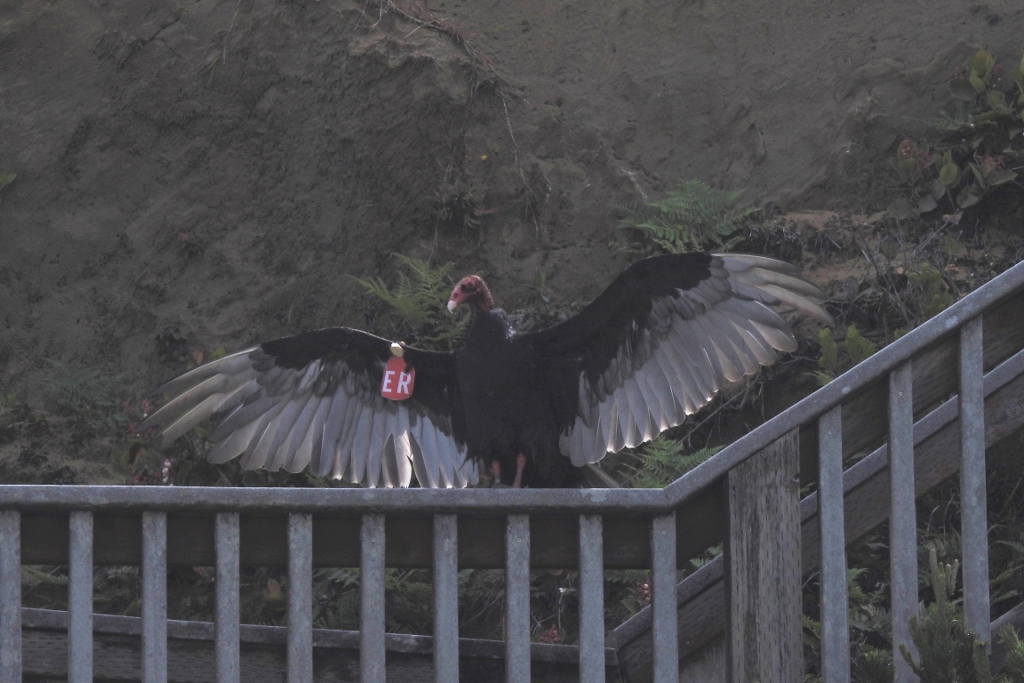
1.Maybe their mothers can tell ‘em apart, but to the human eye, most Turkey Vultures look pretty much the same. Since 2012, we’ve placed uniquely coded wing tags on 62 Turkey Vultures, making these free-flying avian scavengers identifiable in the wild by spotting scope, camera with telephoto lens, binoculars, and, if they’re really close, the naked eye. (We’ve fitted eight of these vultures with satellite transmitters, but that’s another story!)
2.Turkey Vultures are wing tagged rather than banded because they poop on their legs and feet. This behavior, called urohydrosis, cools their legs through evaporative cooling. Urohydrosis kills harmful bacteria on their legs that is harbored in the carrion they eat, given the acidic nature of their feces.

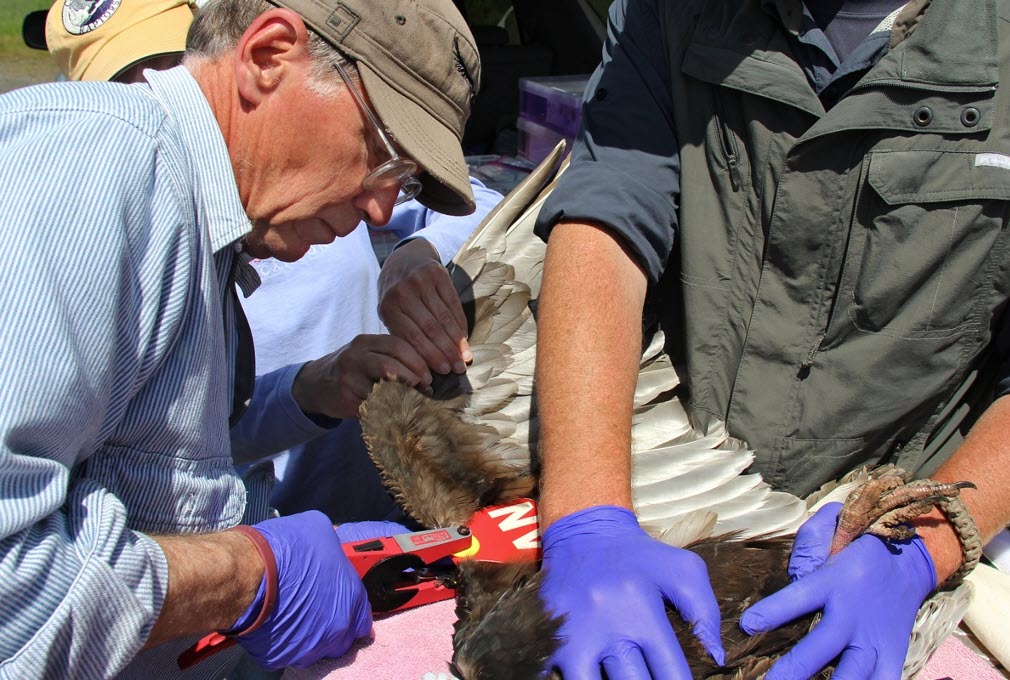

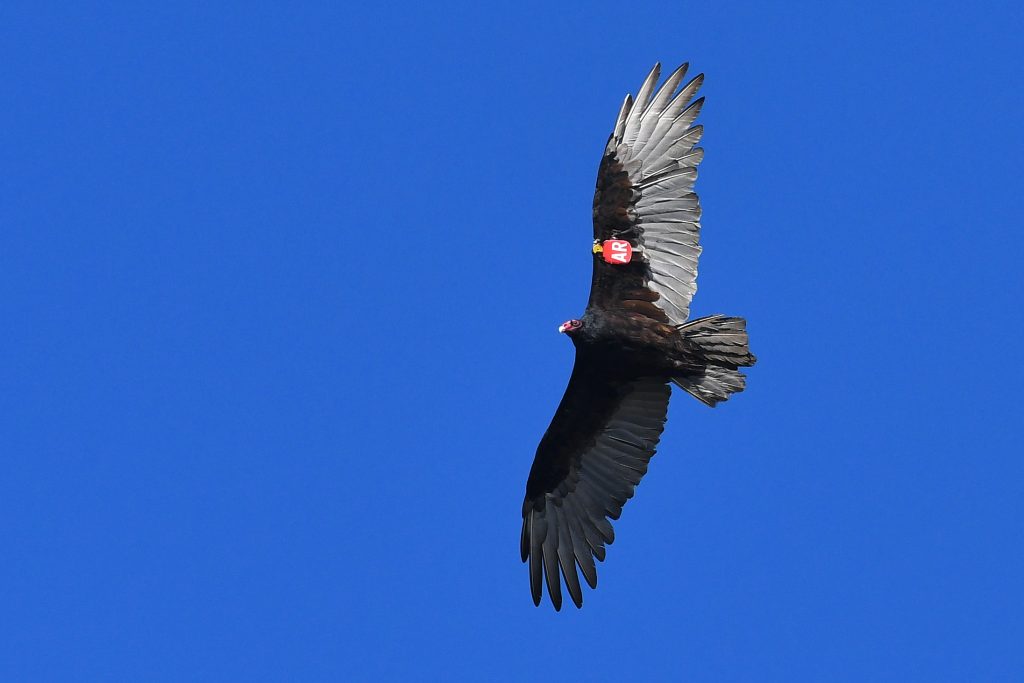
3.Over the years, 288 resightings have been made by 165 people not involved in our research efforts. Their observations comprise 78% of the 370 resightings we’ve had as of October 22, 2025. Not surprisingly, a good number of these have been made by biologists not involved with our research efforts.
4.Marty Bray and his wife Jeannie Heltzel are part of this group: biologists by profession who love to bird in their spare time. I’ve gotten to know them through email and phone conversations over their resightings of ER, a vulture that we tagged in 2014. Now retired, Marty had a career as a biologist with National Wildlife Refuges and with the US Forest Service. Not retired yet, Jeannie’s career path took a turn when she earned a degree in statistics; she works as a consulting biostatistician for state and federal agencies, tribes and other groups.
5.Marty and Jeannie bird as a team. They resighted ER on three occasions spanning 10 years. A resighting that Marty and Jeannie made in 2015 was our first report. Six years later they encountered ER again. Another four years flew by when, in 2025, they had their third resighting.

6.The map below shows the locations and dates of their resightings with Newport, Oregon as a point of reference. Newport is about six miles west of the ER’s tagging location (red pin). Marty and Jeannie’s resightings, clustered less than three miles apart, occurred about eight miles south of Newport.
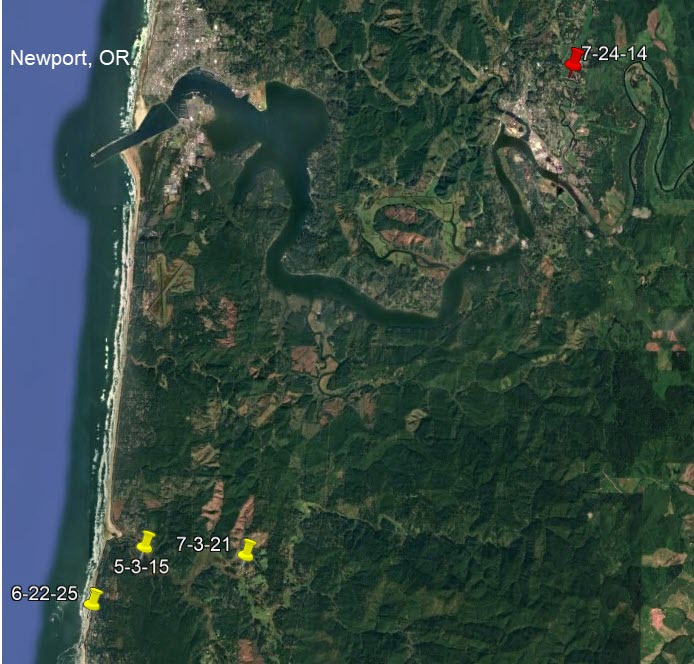
7.Marty and Jeannie reported their first resighting online to the USGS Bird Banding Lab (BBL). The BBL provides observers with information on the marked birds that they reported, including who was responsible for the marking, their contact information, and when and where the bird was marked. For each resighting reported to the BBL, the banders are sent a report that includes when and where the bird was observed as well as the observer’s name and email address.
Documenting Site Fidelity
8.In addition to Marty and Jeannie’s resightings of ER, I’ve had six other reports. Five of the six were from the same area south of Newport where Marty and Jeannie had observed him (or her, we’re not sure which!). These observations, nine total, occurred from May through July each year during this 10 year span of time. Altogether they provide evidence of summer site fidelity for ER on the Oregon coast.
Documenting Longevity
9. Documenting the longevity of our tagged Turkey Vultures begins with determining their age at marking. With Turkey Vultures, paying attention to beak color at capture is key. In recently fledged vultures, the beak is black. Within several months the beak becomes an ivory color infused with gray. By age two and beyond, the beak is all ivory (photos below).
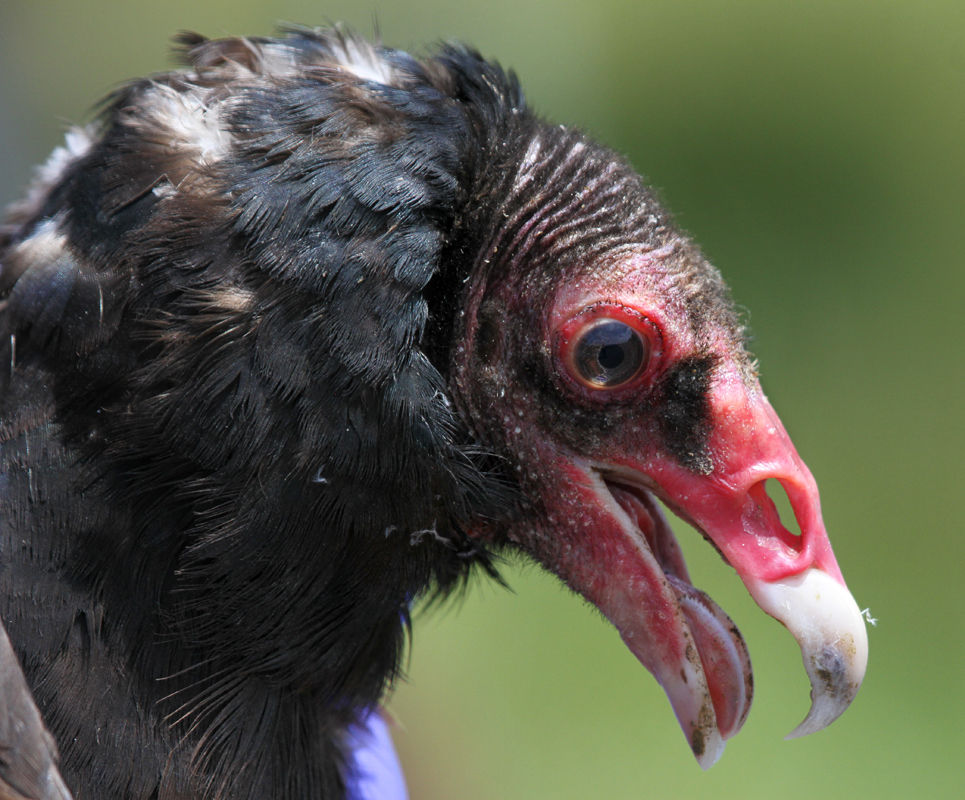
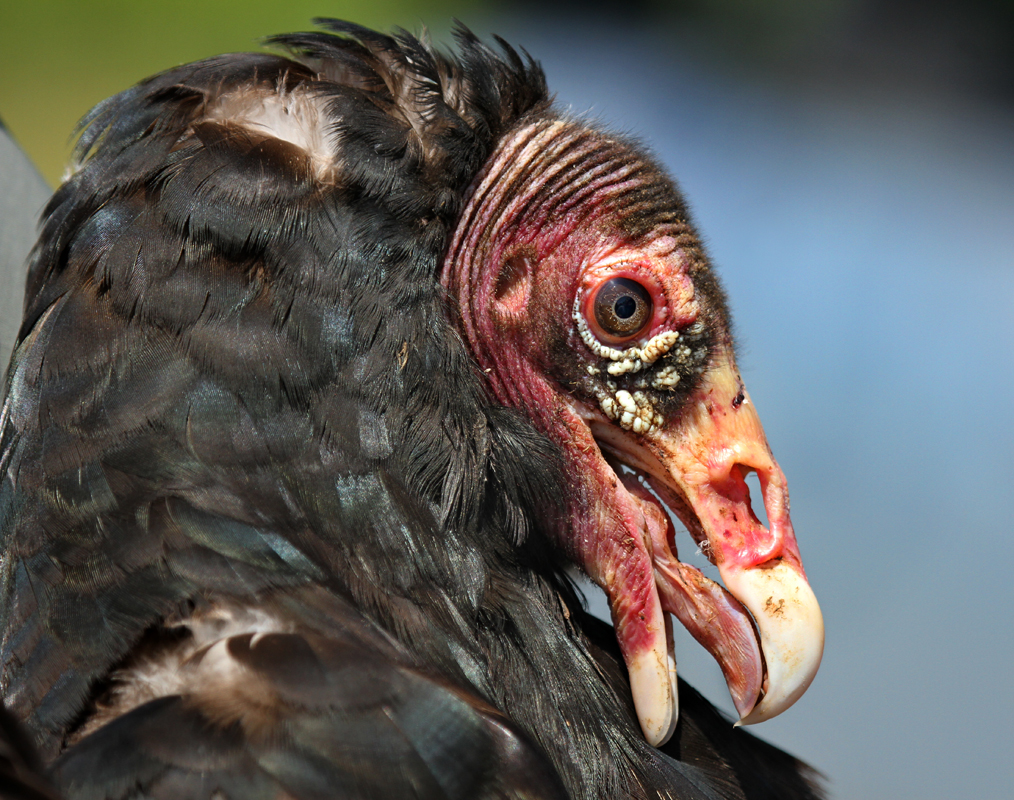
10.When tagged on July 14, 2014 ER’s beak had not a hint of gray. Accordingly, we concluded that he (or she, we’re not sure which!) was at least two years old at the time. ER was therefore at least 13 years old when resighted in 2025. At 13, ER is situated with three other 13-year olds as the oldest vultures in our study. Turkey Vultures may live long lives. The oldest one on record with the BBL is age 23 (as of October 2025).
Documenting Tag Wear
11.Our tags wrap around the leading edge of the wing such that the letter-letter codes are visible on the top and bottom sides. In an email regarding Team Ona’s 2025 resighting of ER, Marty included a photo that showed that the top side of the tag was missing.
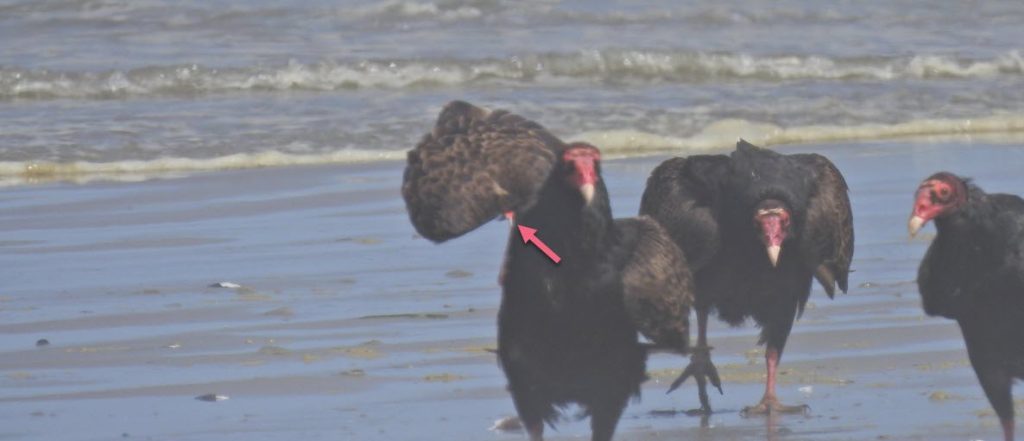
12.Our wing tags have held up well over the years. Marty and Jeannie’s report is only the third one that I’ve received documenting tag wear (photos below)
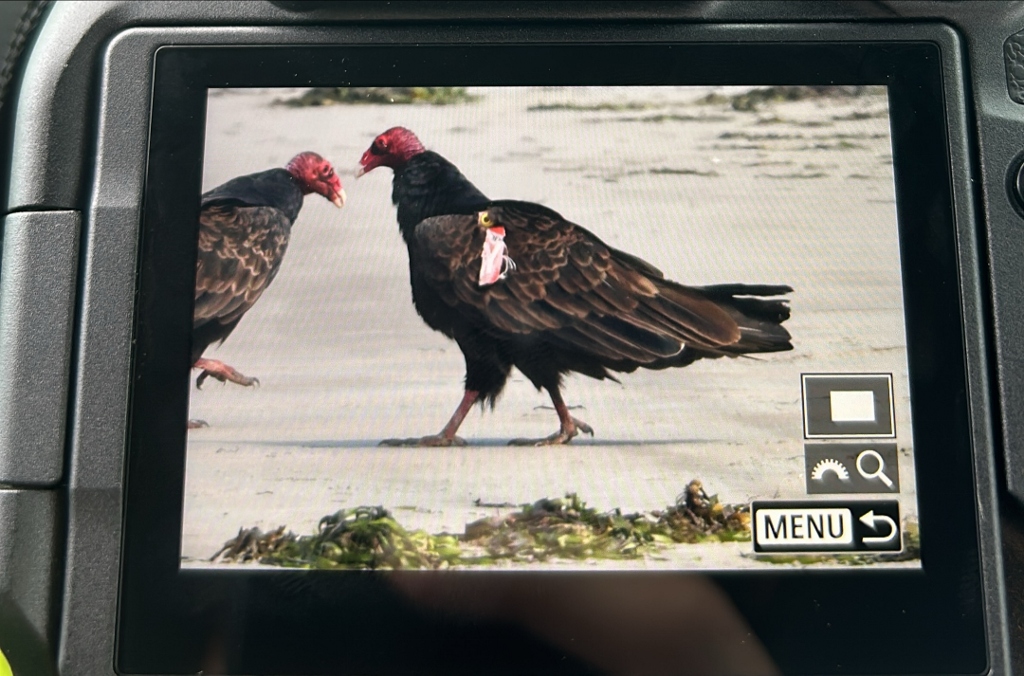
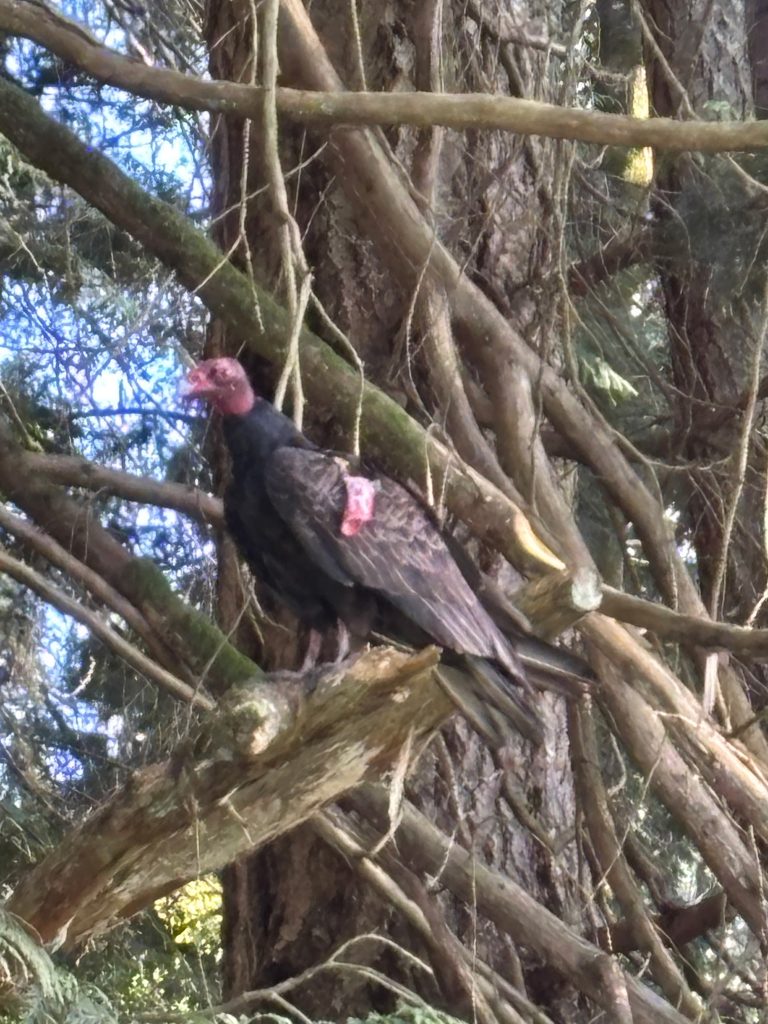
Contributing Data to eBird
13.Marty and Jeannie also contribute reports on all of the birds they observe when birding to the Cornell Laboratory of Ornithology’s eBird. Jeannie got the two of them started with eBird and does most of their reporting. So far, eBird has received more 3,000 bird checklists from them with more than 2,800 of these from locations less than five miles from their home.
14.Thanks much, Marty and Jeannie, for taking time to contribute data to our Turkey Vulture tracking study… and to eBird!
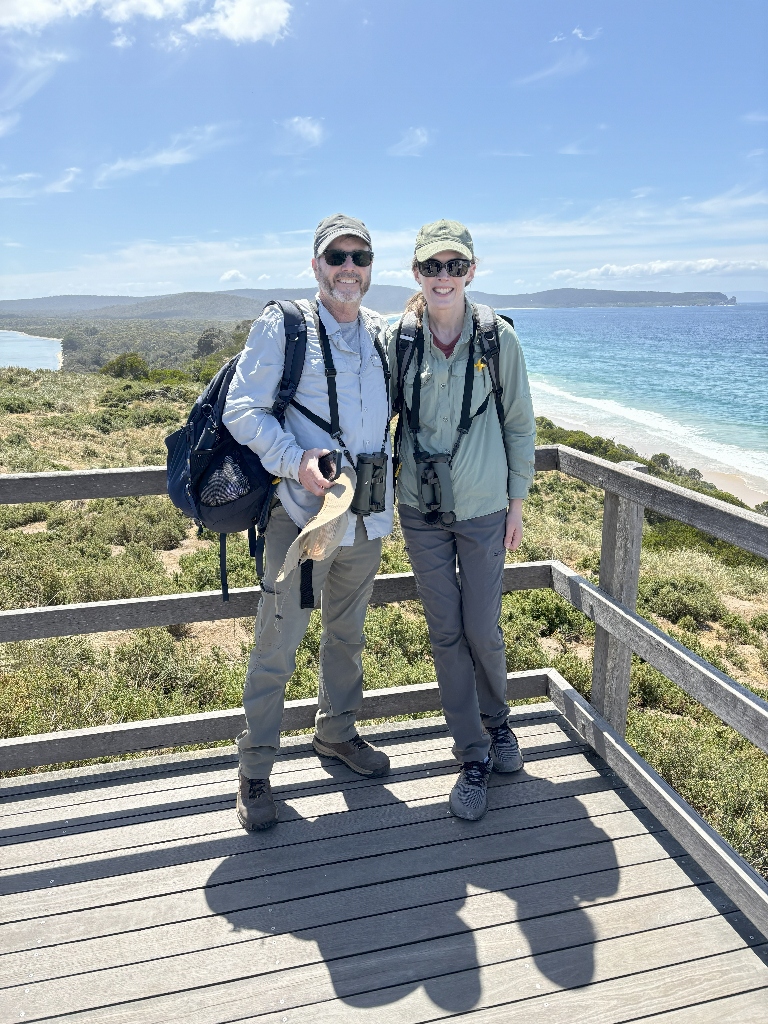
Note: If you would like to see more of my Blog posts on Turkey Vultures, click on Tracking Turkey Vultures below.
